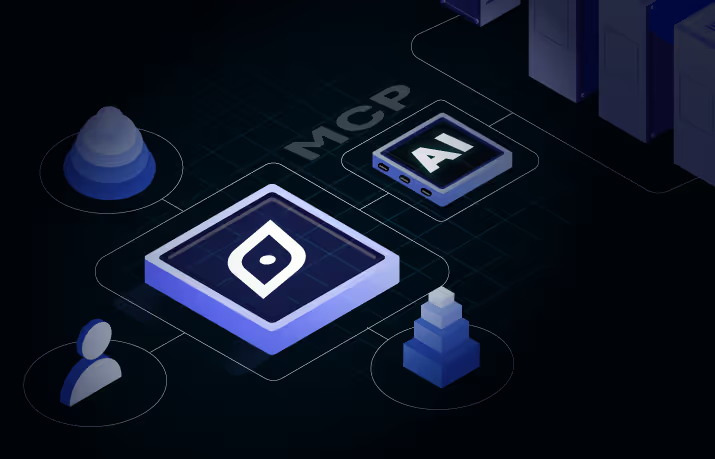AI Recruitment Platform: Transforming Talent Acquisition with Insights from Global Labor Market Data
Finding the right candidate who has the required skill sets needed for a certain job role is crucial yet challenging to find without AI recruitment platform.
With traditional recruitment methods, companies often struggle to keep up with the dynamic market because of limited geographic reach and data constraints. This results in prolonged hiring cycles, higher costs, and suboptimal matches.
In response to these challenges, the integration of AI recruitment platform in your current Talent Acquisition process can be proven a game-changer. Onboarding an AI recruitment platform can help you identify the perfect candidate from a pool of millions, all within a matter of seconds.
With advanced algorithms and machine learning models, AI recruitment platform can scan millions of datasets, identify hidden patterns and provide in-depth insights on talent hotspots, candidate profiles and domain experience, top hiring locations and competitor analysis, enabling a more accurate, efficient and fair recruitment process.
Moreover, AI recruitment platform’s ability to analyze global data sets enables talent acquisition leaders to conduct precise competitor analysis. By understanding where competitors are sourcing talent and what skills they prioritize, organizations can refine their hiring strategies to stay competitive in the market.
This strategic AI recruitment platform advantage not only accelerates hiring cycles but also reduces costs associated with prolonged searches or misaligned hires.
The Strategic Importance of Global Labor Market Data Sets and AI Recruitment Platform
Broader Talent Insights
Global data sets offer talent acquisition leaders a 360-degree view of the talent landscape. With AI recruitment platform aggregating data from various regions, industries, and demographics, and providing insights into emerging markets and previously untapped talent pools, talent acquisition leaders can identify and target niche skills and talent in real-time, that might be overlooked when relying on limited data points.
This comprehensive view utilizing AI recruitment platform allows talent acquisition leaders to predict hiring trends, understand competitive benchmarks, and identify optimal talent sources. This global talent mapping enables talent acquisition teams to target high-potential talent pools easily.
Understanding the global talent landscape enables correct strategic decisions and provides talent acquisition leaders with a 360-degree visibility over available talent – improving recruitment outcomes supporting diversity hiring goals and cost efficiency.
For example – An enterprise global tech firm wants to explore new markets. By leveraging the AI recruitment platform, they have access to actionable insights gained from diverse data sets in real time.
This will help them uncover a community of say, AI developers specializing in renewable energy – a talent pool vital for their sustainability goals which was previously overlooked in a market where they want to explore. This real-time insight from AI recruitment platform allows them to strategically tap into niche skills worldwide, enhancing their competitive edge in talent acquisition.
Cross-Market Comparisons
The ability to benchmark talent across different geographies, industries and peers is an immensely powerful tool for strategic decision-making. Leveraging global data sets enables talent acquisition leaders to perform these benchmarks with high accuracy and in-depth analysis.
These global data sets provide comprehensive information on regional variations in skill availability, allowing companies to identify where specific talents are most abundant or scarce.
With hands-on global data sets, talent acquisition leaders can have a competitive edge by seeing beyond just the resume of a candidate. AI recruitment platform can help them shed light on candidate expectations, including preferred benefits, work-life balance priorities, and career development opportunities, which vary significantly across cultures and regions.
By understanding these expectations, companies can tailor their recruitment strategies to better align with what potential candidates are looking for, making them more attractive employers.
Overall, global data sets empower talent acquisition leaders to make informed, strategic decisions by providing a detailed, nuanced view of the global talent landscape, enhancing their ability to attract and retain the best talent from around the world.
For example – A multinational technology firm is looking to expand its presence in the North America. By leveraging global data sets, their talent acquisition team can benchmark talent across different geographies and industries to understand the regional variations in skill availability.
For instance, they might discover that AI recruitment platform developers with expertise in AI and machine learning are abundant in California but scarce in Texas, particularly in cities like Houston.
Alternatively, they can gain insights into candidate expectations in these regions. Armed with this information, the company can tailor its recruitment strategies accordingly through AI recruitment platform.
Optimize Your Talent Strategy Leveraging Global Labor Market Data Insights
Leveraging the power of comprehensive data sets, talent acquisition leaders can benchmark talent across different geographies and industries provided with detailed information on regional variations in skill availability, enabling talent acquisition leaders to identify where specific talents are most abundant or scarce.
By understanding these variations, companies can strategically target regions with a high supply of needed skills, optimizing recruitment efforts and reducing time-to-hire via AI recruitment platform. This approach ensures that organizations are not only filling positions quickly but also sourcing the best talent available in the market.
AI recruitment platform can further enhance your strategy by providing deep insights into candidate expectations and preferences. AI recruitment platform analyze data from various regions and cultures, revealing key factors such as preferred benefits, work-life balance priorities, and career development opportunities.
For instance, a company looking to expand in Asia might find that candidates in Japan prioritize job security and long-term career prospects, while those in India may value flexible working hours and opportunities for rapid advancement.
Tailoring recruitment strategies to align with these regional preferences makes the company more attractive to potential candidates, improving the likelihood of attracting top talent and increasing retention rates.
Insights generated from global data sets can offer talent acquisition leaders a profound advantage, enabling them to make informed decisions that align with their business goals and attract top talent from diverse backgrounds.
Here’s how integrating comprehensive global data through AI recruitment platform into talent strategies can transform recruitment processes:
Harnessing Comprehensive Data Sets for Strategic Advantage
Harnessing comprehensive data sets for strategic advantage in talent acquisition involves leveraging extensive and detailed data scattered across various sources to gain a deeper understanding of regional variations in skill availability, emerging trends in specific industries, and shifts in workforce preferences.
With such detailed insights from AI recruitment platform, talent acquisition leaders can tailor their recruitment strategy depending on the region they are planning to hire. By in-depth analysis, organizations can strategically plan their talent acquisition initiatives, optimize resource allocation, and proactively address potential skill shortages.
This approach not only streamlines the recruitment process but also enhances decision-making capabilities, ensuring companies are well-equipped to attract and retain top talent in a competitive market environment.
For example, a technology company expanding into Europe might use data insights to discover that cybersecurity experts are highly concentrated in Germany and France, prompting targeted recruitment efforts in these regions.
By strategically leveraging data through the AI recruitment platform, organizations optimize their recruitment strategies, ensuring they attract candidates with the right skills to drive business growth.
Tailoring Recruitment Strategies with Cultural and Regional Insights
AI recruitment platform analyze global data to uncover nuanced insights into candidate preferences and expectations, which vary significantly across cultures and regions. Understanding these factors allows companies to tailor their recruitment strategies accordingly.
Tailoring recruitment strategies with cultural and regional insights involves customizing approaches to align with the preferences, expectations, and values of candidates in different geographic locations and cultural contexts.
This approach recognizes that candidate motivations and priorities can vary significantly across regions, impacting their attraction to and engagement with potential employers.
By integrating cultural and regional insights from AI recruitment platform into recruitment strategies, organizations can foster stronger connections with candidates, reduce hiring biases, and ultimately build diverse and inclusive teams that contribute to the company’s long-term success in global markets.
This strategic alignment ensures that recruitment efforts are not only efficient but also effectively meet the unique needs and expectations of talent in different parts of the world.
For example, A company looking to expand in India might find that candidates in Bangalore prioritize work-life balance and career development opportunities, while those in Mumbai value competitive compensation packages.
By aligning recruitment messages and benefits offerings to regional preferences, organizations enhance their attractiveness as employers and improve candidate engagement and retention.
Driving Long-Term Success Through Informed Decision-Making
Continuous analysis of global talent trends enables proactive talent pipeline development, ensuring organizations remain agile and responsive to evolving market demands.
By analyzing candidate preferences and expectations specific to each country, talent acquisition leaders can redefine their approach, tailor their recruitment messages and benefits offerings accordingly. This will enhance the organization’s appeal to top talent in these critical markets.
Furthermore, leveraging data-driven insights from AI recruitment platform allows organizations to identify emerging skills and competencies that are becoming increasingly valuable in different regions.
This foresight enables talent acquisition teams to proactively source and nurture candidates with these in-demand skills, ensuring a steady and relevant talent pipeline.
By staying ahead of the curve, companies can not only fill current vacancies more effectively but also anticipate future workforce needs—positioning themselves as industry leaders.
Leveraging an AI recruitment platform enables a more strategic approach to talent acquisition, driving sustained competitive advantage and business growth.
For example, a multinational technology firm expanding into North America uses an AI recruitment platform alongside global data insights to analyze regional talent trends.
They discover a high demand for cybersecurity experts in California and Texas due to the rising frequency and sophistication of cyber threats.
Armed with this knowledge, the company strategically focuses its recruitment efforts on sourcing experienced cybersecurity professionals from these states.

Unlock Strategic Talent Insights Through Global Market Trend Analysis
Real-Time Market Insights
Talent Acquisition leaders need real-time insights to remain competitive. Global data sets provide a dynamic view of job market trends, salary benchmarks, and the demand for specific skills.
For example, during a spike in demand for data science talent in India, a global data-driven AI recruitment platform can alert recruiters to the rising need for software engineers in the region.
This prompts timely and strategic recruitment drives, ensuring that companies remain agile and responsive to market changes.
With this proactive approach, company remains agile, responsive to market changes, and well-positioned to attract and retain the best candidates in a competitive landscape.
Strategic Workforce Planning
With leveraging global labor market data insights, organizations can engage in more effective workforce planning.
Understanding regional talent availability, compensation trends, and industry growth projections helps in developing long-term recruitment strategies that align with business objectives.
Such recruiting and strategic workforce planning utilizing AI recruitment platform ensures companies are well-positioned to meet future demands, driving sustained competitive advantage and fostering business growth.
For example, a retail MNC planning to set up a GCC in India can leverage India specific data to identify the best talent in the region. By analyzing data on talent availability, compensation trends, and skill sets in various Indian cities, the company can determine the most strategic locations for their GCC.
This data-driven and AI powered recruiting approach with AI recruitment platform ensures that the organization can tap into a robust talent pool, reducing the risk of talent shortages.
Navigating Bias: Implementing Fair and Inclusive Hiring Practices
Reducing Algorithmic Bias
One of the significant challenges in recruitment utilizing AI recruitment platform is mitigating algorithmic bias. Diverse data sets play a crucial role in reducing bias by providing a balanced representation of various demographics.
For example, an AI model trained exclusively on data from a single region may develop biases based on the socio-economic and cultural context of that region.
In contrast, a model trained on global data is exposed to a broader range of experiences and backgrounds, which helps in minimizing such biases and promoting fairer hiring practices.
Promoting Diversity
Global data sets support diversity and inclusion initiatives by expanding the talent pool to include candidates from different backgrounds and regions.
This inclusive approach not only enriches the organizational culture but also enhances innovation and performance by bringing diverse perspectives into the workplace.
For instance, by leveraging global data, a company can identify underrepresented talent in specific regions and actively target these candidates, promoting a more diverse and inclusive workforce.
This strategy not only meets diversity goals but also drives better business outcomes by fostering a more innovative and creative environment.
Conclusion
The integration of AI recruitment platform leveraging global labor market data marks a transformative shift in talent acquisition strategies. By harnessing comprehensive insights into global market trends, organizations can optimize their recruitment processes, enhance workforce diversity, and remain agile in responding to evolving industry demands.
AI recruitment platform not only enable real-time access to critical job market information but also empower talent acquisition leaders to make informed, strategic decisions that align with business objectives.
Furthermore, by mitigating algorithmic bias and promoting fair and inclusive hiring practices, AI recruitment platform ensures a balanced representation of diverse candidates, fostering a more equitable recruitment process.
This inclusive approach not only strengthens organizational culture but also drives innovation and performance by leveraging diverse perspectives.
As companies continue to expand globally and navigate competitive landscapes, talent acquisition leaders should explore the potential of AI recruitment platform. This will help them excel in enabling workforce planning, identifying emerging skills, and supporting targeted recruitment efforts in high-potential markets.
Ultimately, by unlocking strategic talent insights through global market trend analysis, organizations can position themselves as leaders in attracting, retaining, and developing top talent worldwide, driving sustained business growth and success.


























.svg)



.svg)





.svg)
